1. The wheelbase informed a lot of Kia’s decision making with the car. “Its 114 inch wheelbase [114.4 to be precise] is longer than anything else in the markets that it’s up against. The A4, the A5, even the GS 350, so the benefit there was, you get a lot bigger backseat,” said Hedrick. “The tradeoff is, you can’t twist, turn, and move like a 3 Series, or the ATS. And that was a deliberate tradeoff. I think for us, it was important, really, to be true to what the concept of the vehicle was. It’s not to be a 3 Series, it’s to be a GT.”
2. Out at the Nürburgring, the Stinger’s pro drivers were looking to communicate specific attributes to the engineers that are more in line with a GT car. “They were looking for specific things like high speed stability, being able to track a line, is it balanced when you go over a negative radius? Does the car kind of offset, and does it feel heavy? A lot of the work is actually done digitally, before the car was even put together,” said Hedrick.
3. Weight distribution was a key focus, as was the powertrain placement. “We were trying to get as much as possible, the center of gravity down low, and in the middle of the car so we get close to 50/50. So that drove decisions, for instance, they did a lot of work making sure the engine is as low as possible and towards the middle of the car as possible,” said Hedrick.
4.
The Stinger is built on the same basic platform as its K900 stablemate, but with a key difference. The mid FR platform, it’s the modular platform we use it across the board for
K900, our sisters [Hyundai/Genesis] it for their two big FR cars. But the front and dash, forward, the engine room box is completely different,” Hedrick said. “It’s a little bit smaller in the front, it’s a little bit lighter, so that helped with the weight distribution.”
5. No, the Stinger’s hood vents aren’t functional (surprise, they’re a design flourish), but there is some functional design at the front of the car. “There’s an air curtain [at the edge of each side of the lower fascia]. And what that does is, when air comes around it creates a turbulence, a low pressure area [around the front wheels]. This helps create a sheet and it breaks that low pressure, and it just helps the aerodynamics a little bit. It stops that turbulence that happens along the side of the car,” Hedrick said.
6. While the hood vents aren’t functional, there is a “floating hood” on the Stinger. “The other big discussion point was using, they call it an island hood, it’s the term that R&D groups call it, I think everybody else calls it a floating hood,” said Hedrick. “Typically, we have a cut line that goes across just behind the fascia, and it comes down over the fenders. A lot of other manufacturers use it but it’s expensive because you’ve got to get all of those parts coming together, and to make sure it’s flat and even all the way across. So this is the first application of that, and we wanted to give it that premium feel, that premium look.”
7. The interior of the 2018 Stinger carried over elements of the GT concept from 2011, and packaging and use of top tier materials were a major focus. “I think from an overall standpoint, this cockpit is pretty straightforward. We’ve got the three center vents in it. This was also from the original concept; they included a lot of the details on that. This has a shift by wire, which helped in some of that packaging when that transmission came through. The main thing is the backseat. But I think the other point is the premium materials. We didn’t have any really hard arguments with the bean counters, we were able to get pretty much everything we wanted,” Hedrick said.
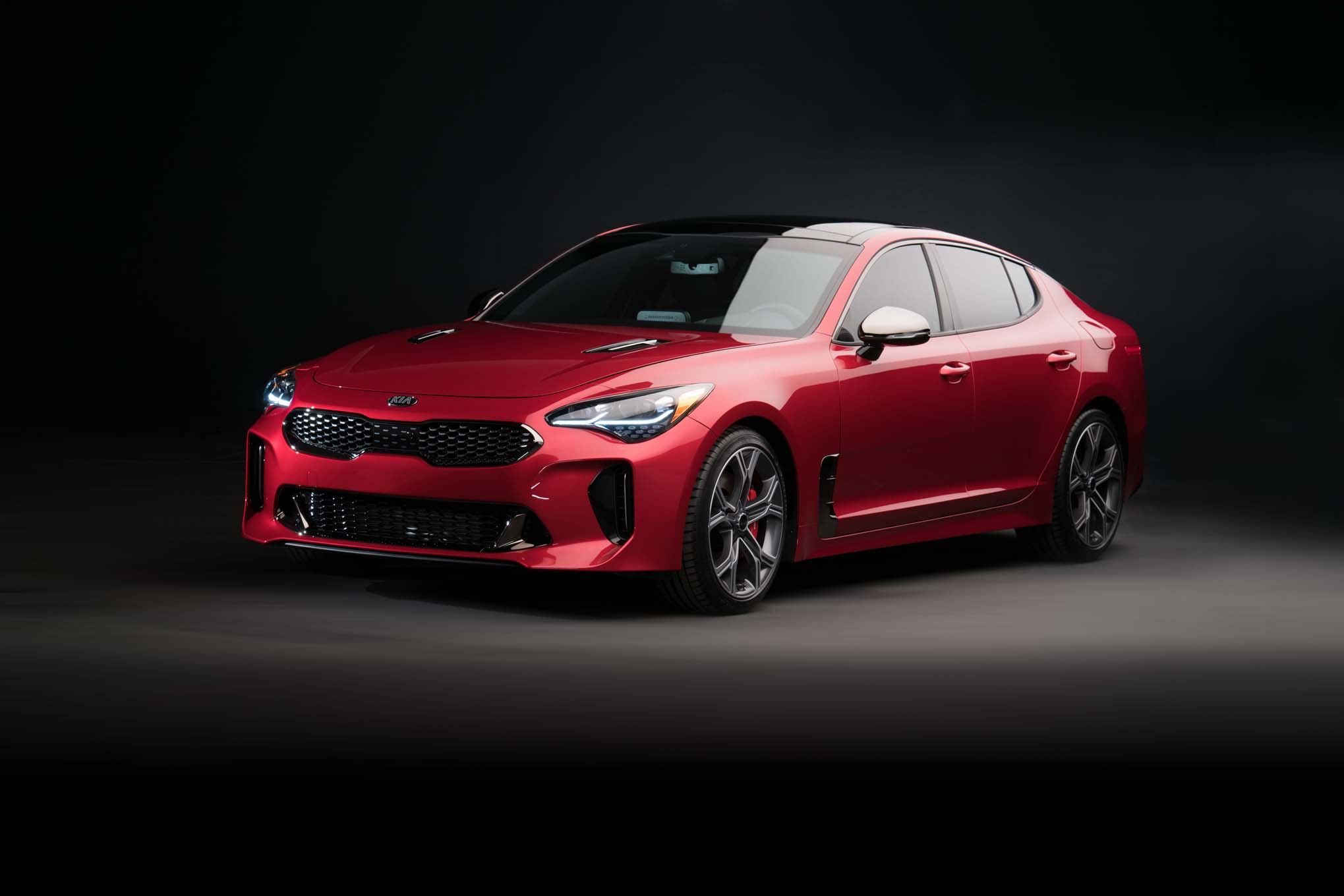
8. The Stingers feature Brembo brakes at all four corners on both the base car and the Stinger GT, and they will roll on Michelin rubber. But there’s still a question whether they will be summer or all-season as the main option. “There’s only two other names except ours on the car, hence, on the tires and the brakes, so we wanted to make sure that we had top tier stuff,” said Hedrick. “These are specific tires, they’re different sized. We have two sets; we have an 18-inch, and a 19-inch. The 19s are available only on the V-6 twin turbo. And on the all-wheel drive, we’re gonna fit all of them with summer and we’re having a debate, we haven’t finalized yet whether to do all-seasons or summer.”
9. The Stinger’s hatchback-style trunk opening created some specific challenges the team had to address. There are other five doors out there, but if you’re going after handling, this is a huge engineering challenge, this big open space in the back of the body. So there was a lot of work that went into the body in white to make sure there was this stiff, rigid chassis that we needed,” said Hedrick. “This was really a trick because it’s right over the suspension point so you’re pushing all of the road inputs right where you have a giant hole. So the backend, if you watch it on the CAD it can really move around a lot. So there’s a giant ring of ultra, high-strength steel that goes around this opening, which is a really tough material to work with. It has to be molded while it’s molten, while it’s red hot. So they have to move this thing, and it’s all done with robotics to give it the proper shape.”
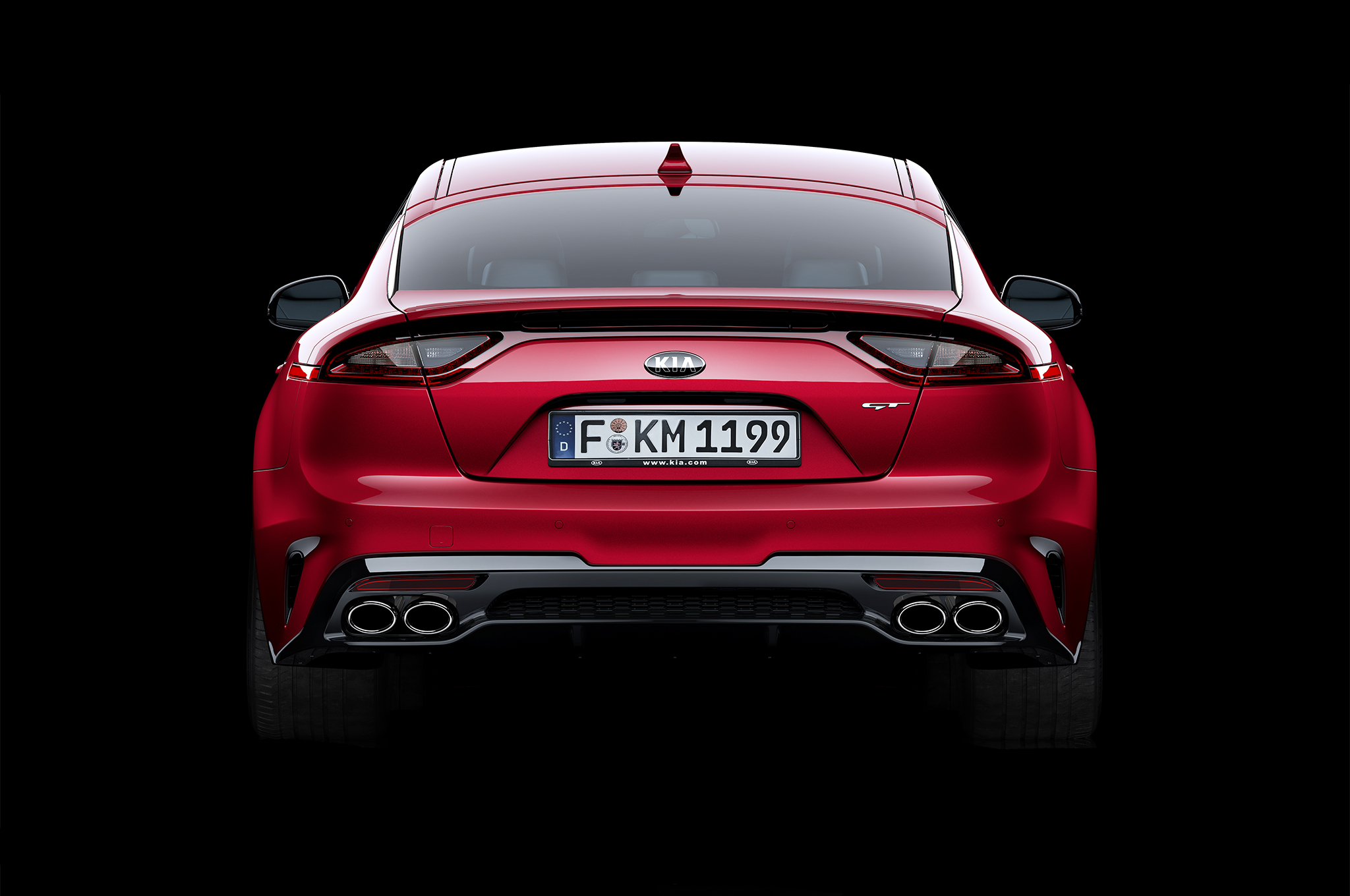
10. The concept also drove the decision to create the hatch-style trunk. We wanted to have something that was true to the concept which was two couples going down to a getaway weekend, a three day weekend, to make sure there’s enough room. If you look at the trunk on a 3 Series or an ATS, or premium sedans, it’s really small. And this, we thought, was kind of in line with the Kia practicality and the idea that you could use it as an everyday car and it’s really versatile, having this space back here means you can do a lot with it,” said Hedrick.
11. Roughly 130 meters of industrial strength adhesive is used throughout the car. “All of this was driven to get a really, really, super stiff, light body. It was not only for safety, it was also for that premium feel that we’re trying to build, that Germanic, European feel. But also just to give it a great handling, so the suspension can do its job,” said Hedrick.
12. The former head of BMW’s M division had a hand in the Stinger’s engineering. It’s a really cool looking car, and it’s going to drive as good as it looks because we’ve got Albert [Albert Biermann, BMW M’s former VP of engineering who left the company to become Hyundai’s head of vehicle test and high performance development in late 2014] involved with it from about halfway through development. And he’s pushing us really hard to make sure that it’s a great drive and also for our dealers to get them excited, because they’ve never had a driving car. So it’ll be interesting, it’ll be really interesting.
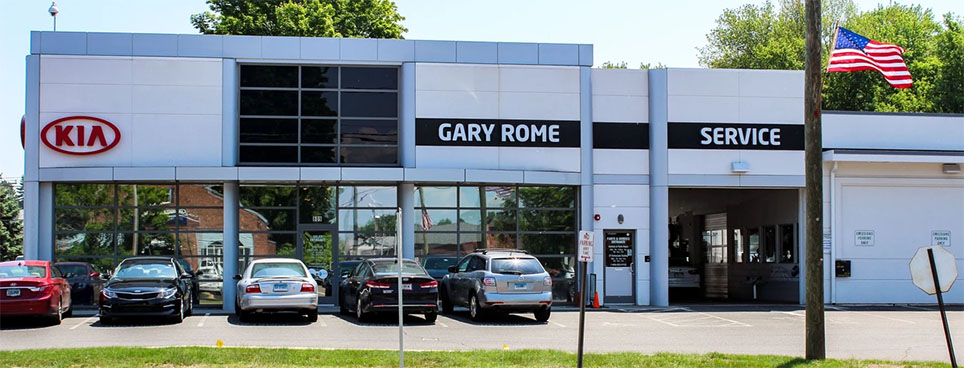






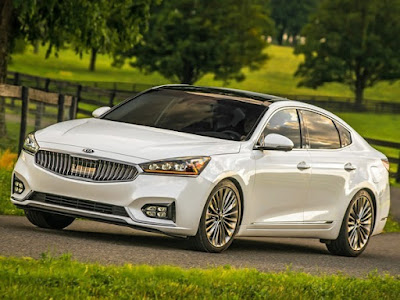

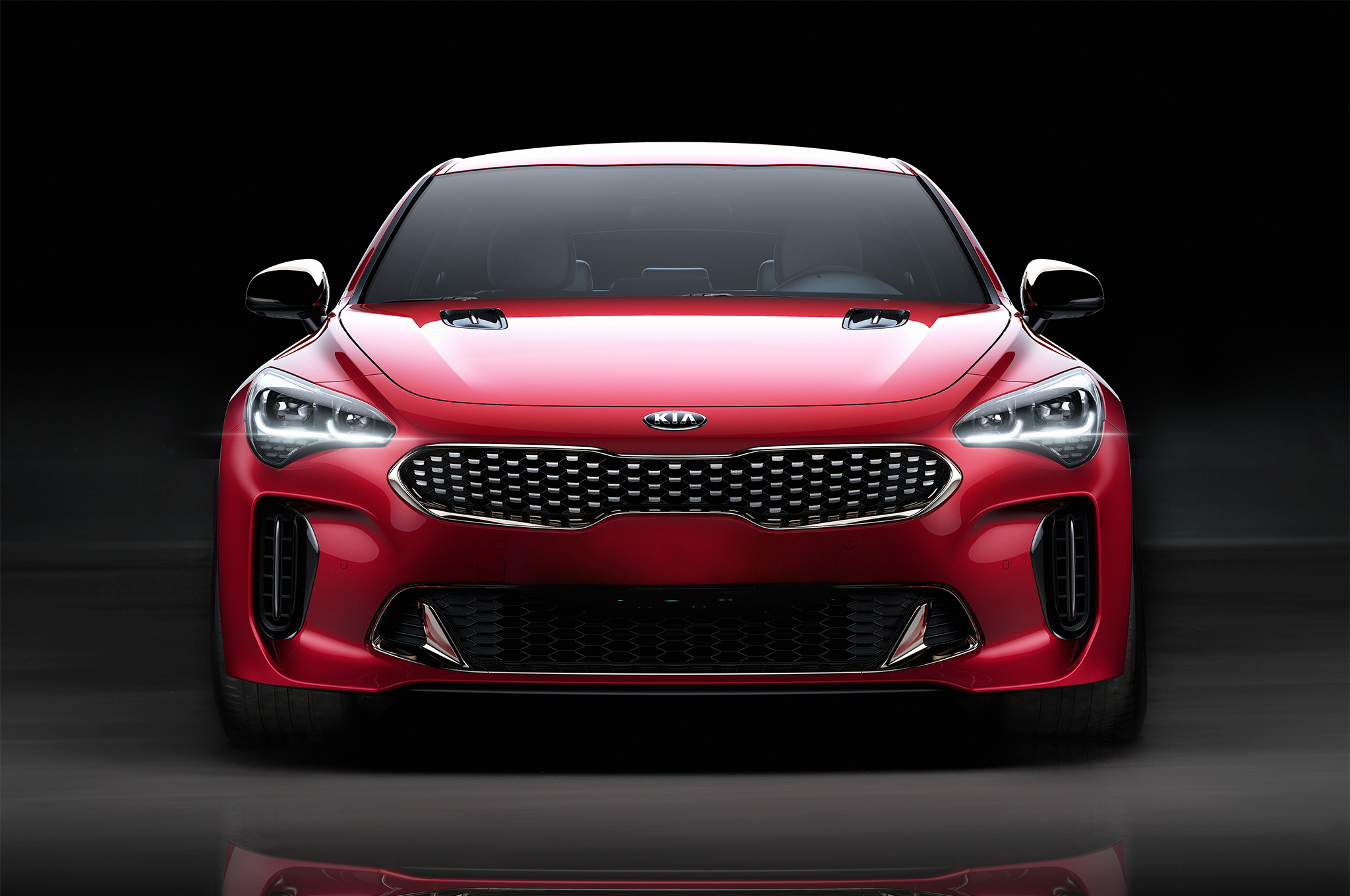



/cdn0.vox-cdn.com/uploads/chorus_image/image/52671711/kia_stinger_detroit_auto_show_2017_1437.0.jpg)
/cdn0.vox-cdn.com/uploads/chorus_asset/file/7780327/kia_stinger_detroit_auto_show_2017_1271.jpg)
/cdn0.vox-cdn.com/uploads/chorus_asset/file/7780325/kia_stinger_detroit_auto_show_2017_1277.jpg)
/cdn0.vox-cdn.com/uploads/chorus_asset/file/7780323/kia_stinger_detroit_auto_show_2017_1286.jpg)
/cdn0.vox-cdn.com/uploads/chorus_asset/file/7780321/kia_stinger_detroit_auto_show_2017_1288.jpg)
/cdn0.vox-cdn.com/uploads/chorus_asset/file/7780319/kia_stinger_detroit_auto_show_2017_1292.jpg)
/cdn0.vox-cdn.com/uploads/chorus_asset/file/7780317/kia_stinger_detroit_auto_show_2017_1298.jpg)
/cdn0.vox-cdn.com/uploads/chorus_asset/file/7780315/kia_stinger_detroit_auto_show_2017_1305.jpg)
/cdn0.vox-cdn.com/uploads/chorus_asset/file/7780311/kia_stinger_detroit_auto_show_2017_1317.jpg)
/cdn0.vox-cdn.com/uploads/chorus_asset/file/7780303/kia_stinger_detroit_auto_show_2017_1353.jpg)
/cdn0.vox-cdn.com/uploads/chorus_asset/file/7780301/kia_stinger_detroit_auto_show_2017_1361.jpg)
/cdn0.vox-cdn.com/uploads/chorus_asset/file/7780299/kia_stinger_detroit_auto_show_2017_1363.jpg)
/cdn0.vox-cdn.com/uploads/chorus_asset/file/7780297/kia_stinger_detroit_auto_show_2017_1367.jpg)
/cdn0.vox-cdn.com/uploads/chorus_asset/file/7780295/kia_stinger_detroit_auto_show_2017_1371.jpg)
/cdn0.vox-cdn.com/uploads/chorus_asset/file/7780293/kia_stinger_detroit_auto_show_2017_1376.jpg)
/cdn0.vox-cdn.com/uploads/chorus_asset/file/7780291/kia_stinger_detroit_auto_show_2017_1383.jpg)
/cdn0.vox-cdn.com/uploads/chorus_asset/file/7780289/kia_stinger_detroit_auto_show_2017_1393.jpg)
/cdn0.vox-cdn.com/uploads/chorus_asset/file/7780287/kia_stinger_detroit_auto_show_2017_1399.jpg)
/cdn0.vox-cdn.com/uploads/chorus_asset/file/7780285/kia_stinger_detroit_auto_show_2017_1404.jpg)
/cdn0.vox-cdn.com/uploads/chorus_asset/file/7780281/kia_stinger_detroit_auto_show_2017_1414.jpg)
/cdn0.vox-cdn.com/uploads/chorus_asset/file/7780273/kia_stinger_detroit_auto_show_2017_1446.jpg)
/cdn0.vox-cdn.com/uploads/chorus_asset/file/7780271/kia_stinger_detroit_auto_show_2017_1449.jpg)
/cdn0.vox-cdn.com/uploads/chorus_asset/file/7780267/kia_stinger_detroit_auto_show_2017_1456.jpg)
/cdn0.vox-cdn.com/uploads/chorus_asset/file/7780333/kia_stinger_detroit_auto_show_2017_1459.jpg)
/cdn0.vox-cdn.com/uploads/chorus_asset/file/7780331/kia_stinger_detroit_auto_show_2017_1463.jpg)
/cdn0.vox-cdn.com/uploads/chorus_asset/file/7780329/kia_stinger_detroit_auto_show_2017_1470.jpg)